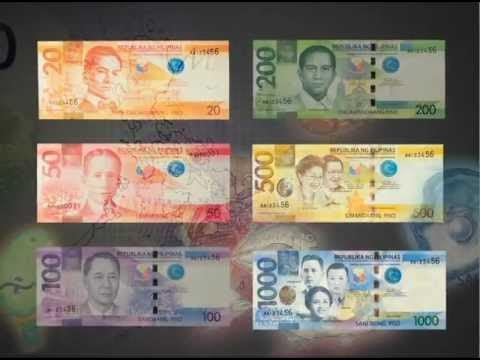History of Philippine Currency and Monetary Standards | Business Finance
Summary
TLDRThis discussion provides an overview of the history of Philippine currency and monetary standards. It explains the role of money in the economy, the establishment of the monetary unit (the Philippine peso), and the country's managed currency system. Key points include the issuance of currency by the Central Bank, rules governing currency circulation, and the process for replacing unfit or damaged currency. The presentation touches on the historical evolution of currency, notable features of new-generation coins and banknotes, and the importance of understanding these aspects for business finance and exams.
Takeaways
- 💰 The Philippines follows a managed currency system, with the peso as its monetary unit.
- 📜 Standard money is the monetary unit recognized by the government as the basic standard of value.
- 🏦 The power to issue notes and coins in the Philippines rests with the Bangko Sentral ng Pilipinas.
- 🔒 All notes and coins issued by the central bank are backed by the assets of the bank and guaranteed by the Philippine government.
- 💱 The central bank must exchange Philippine currency on demand for different denominations to meet business and economic needs.
- ❌ Mutilated or unfit notes and coins, like those that have lost significant parts of their surface or signatures, will not be replaced by the central bank unless damaged accidentally.
- 🔥 Old notes and coins, over five years for bills and twelve years for coins, are subject to retirement and destruction under strict surveillance.
- 📅 The first mint in the Philippines was established by a royal decree in Intramuros in 1857.
- 🖼️ The latest currency designs include new security features and artistic elements like the 1000-peso polymer note featuring a South Sea pearl and traditional designs.
- 📚 Students are encouraged to read about the history of Philippine currency for their first-term exam, particularly focusing on key regimes and monetary standards.
Q & A
What is a monetary standard or system?
-A monetary standard or system is established when a country sets rules to govern the creation of money and control its quantity in circulation. These rules may be followed strictly or accepted as guidelines for money management.
What is the monetary unit of the Philippines?
-The monetary unit of the Philippines is the Philippine peso.
What is 'standard money' in the context of the Philippine monetary system?
-Standard money is the monetary unit recognized by the government as the ultimate basic standard of value, upon which all other kinds of money are convertible.
What is the current monetary system in the Philippines called?
-The current monetary system in the Philippines is called the managed currency system.
Who is responsible for issuing currency in the Philippines?
-The Banco Central ng Pilipinas (Central Bank of the Philippines) is responsible for issuing notes and coins in the country.
What happens to mutilated or damaged currency in the Philippines?
-Mutilated or damaged notes and coins, such as those that have lost more than two-fifths of their surface, are demonetized without compensation unless it can be proven that the damage occurred due to accidental causes or forces beyond the holder's control.
What is the process for retiring old notes and coins in the Philippines?
-Notes that are over five years old and coins that are over twelve years old are retired. The retired paper currency is perforated, bundled, stamped with a perforation date, and incinerated under heavy surveillance.
What is the significance of the 'people power' coins mentioned in the transcript?
-The 'people power' coins are historical Philippine coins. The first mint in the Philippines was established in Intramuros by royal decree in 1857.
What are some key security features of the new generation Philippine currency?
-The new generation Philippine currency includes security features such as a giant pearl, the Tinalak design, and security elements designed to prevent counterfeiting.
What is the role of the Central Bank in currency exchange and replacement?
-The Central Bank is responsible for exchanging Philippine currency of any denomination on demand. If the requested denomination is unavailable, it will provide notes or coins of the closest possible value.
Outlines

This section is available to paid users only. Please upgrade to access this part.
Upgrade NowMindmap

This section is available to paid users only. Please upgrade to access this part.
Upgrade NowKeywords

This section is available to paid users only. Please upgrade to access this part.
Upgrade NowHighlights

This section is available to paid users only. Please upgrade to access this part.
Upgrade NowTranscripts

This section is available to paid users only. Please upgrade to access this part.
Upgrade NowBrowse More Related Video
5.0 / 5 (0 votes)





